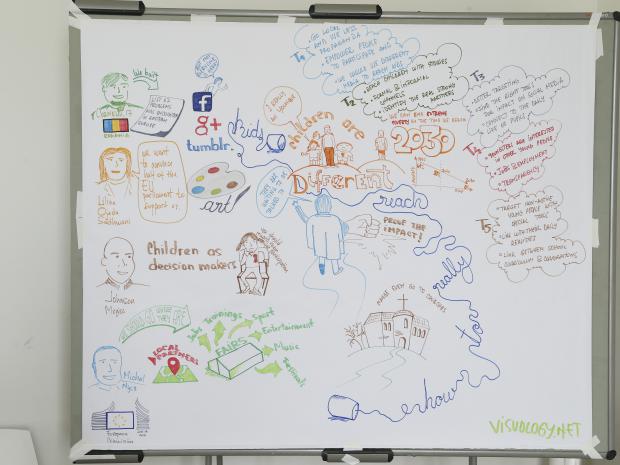Reaching out to young people during the European Year for Development
Discussion details

Here are some of the key conclusions that came out of the discussion on reaching out to young people during the European Year for Development, at the Stakeholders Event on 19 June 2014:
1. Identify the real strong partners according to the context
It is important to interact with multiple stakeholders and to identify which actors are the most influential in the child's context and community. E.g. In Africa, faith leaders are amongst the most influential members in any given community, and religious leaders have been long involved in in provision and delivery of crucial social services to people in need. Faith leaders also play a crucial role in interacting with and thereby influencing children and young people's activities and behaviour. This ultimately not only impacts the wellbeing of children, but the holistic development of communities.
When in Europe religion plays a weaker role, the statement can be adapted to other stakeholders (parents, teachers, medical staff, local/regional authorities, children's parliaments, clubs, councils, etc.)
2. Better targeting and use of formal and informal channels
One of the main issues when targeting young people is that they are often considered as one group. Young people are a diverse array of individuals and not a homogenous whole. The targets should be narrowed down into segments in order to better reach to them and better adapt the messages to communicate. E.g. by schools and by interests such as clubs, music, sports, arts...
It is also important to identify all formal and informal channels to reach all the sub-groups: Ministry of Education, presentations in schools ("back to school campaign"), social media, youth ambassadors, student associations, storytelling, programs for volunteering (gap year), events (concerts, exhibitions, festival)
3. Engage young people to more concrete local actions better connected to their daily lives and empower them to participate.
It is difficult to engage young people on issues that are too far from their reality (education, jobs, training). They are interested but often don't know how to get involved into concrete actions. This could be tackled by engaging them in local projects and activities related to their daily lives (e.g. recycling). Young people have a very strong influence on their surroundings (i.e. family, friends). Using peer to peer communication (youth talking to youth) and for example award-wining competitions to stimulate them could increase their awareness on how they can make a difference.

4. Find the right tools for better impact on social media
Social media is definitely a good tool to reach young people, but how to overcome the constant flow of information? Diversity should not be considered as a problem but as an opportunity. If targets are better identified, messages are better communicated and have stronger impact. Make use of the "selfie generation", by posting also pictures and videos but don't use social media for the sake of using social media.
And the artist at work on the beautiful graphic illustration summing it all up:

Log in with your EU Login account to post or comment on the platform.